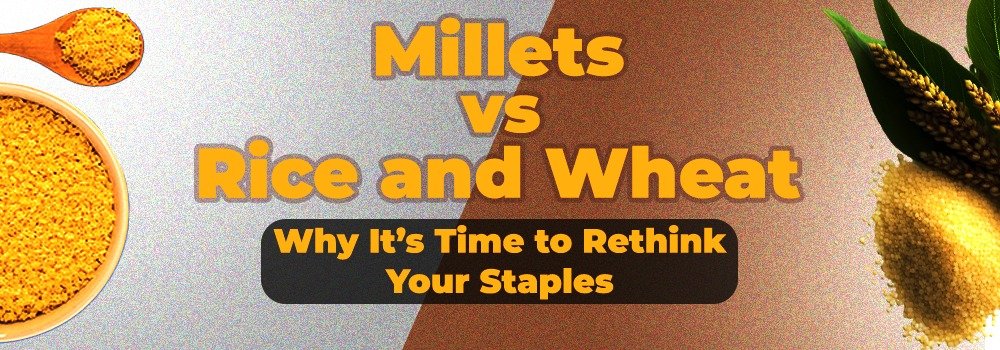Millets vs. Rice and Wheat: Why It’s Time to Rethink Your Staples

Millets, often referred to as "nature's forgotten grains," are making a strong comeback. These tiny seeds, packed with nutrients, have been a staple food in many cultures for centuries. As we become more conscious of our health, millets are emerging as a superior alternative to refined grains like rice and wheat.
Why Choose Millets?
Millets are a nutritional powerhouse, offering a range of benefits:
- Rich in Nutrients: Millets are packed with complex carbohydrates, protein, fiber, and essential vitamins and minerals like iron, calcium, magnesium, and B vitamins
- Low Glycemic Index: Millets release sugar slowly into the bloodstream, helping to regulate blood sugar levels and reduce the risk of type 2 diabetes.
- Improved Digestive Health: The high fiber content in millets promotes healthy digestion and prevents constipation.
- Stronger Immunity: Millets are rich in antioxidants, which help protect cells from damage caused by free radicals.
- Weight Management: Millets are low in calories and high in fiber, making them a great food for weight management.
Incorporating Millets into Your Diet
Millets are incredibly versatile and can be easily incorporated into your daily diet. Here are a few ideas:
- Millet Porridge: A warm and comforting breakfast option.
- Millet Roti: A healthier alternative to wheat roti.
- Millet Khichdi: A nutritious and flavorful one-pot meal.
- Millet Upma: A quick and easy breakfast or snack.
- Millet Flour: Use it to bake bread, cakes, and cookies.
By choosing millets, you're not only improving your health but also contributing to a more sustainable future. These grains are drought-resistant, require less water, and can be grown in marginal lands. So, let's embrace the power of millets and make them a part of our daily diet.
